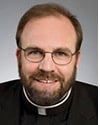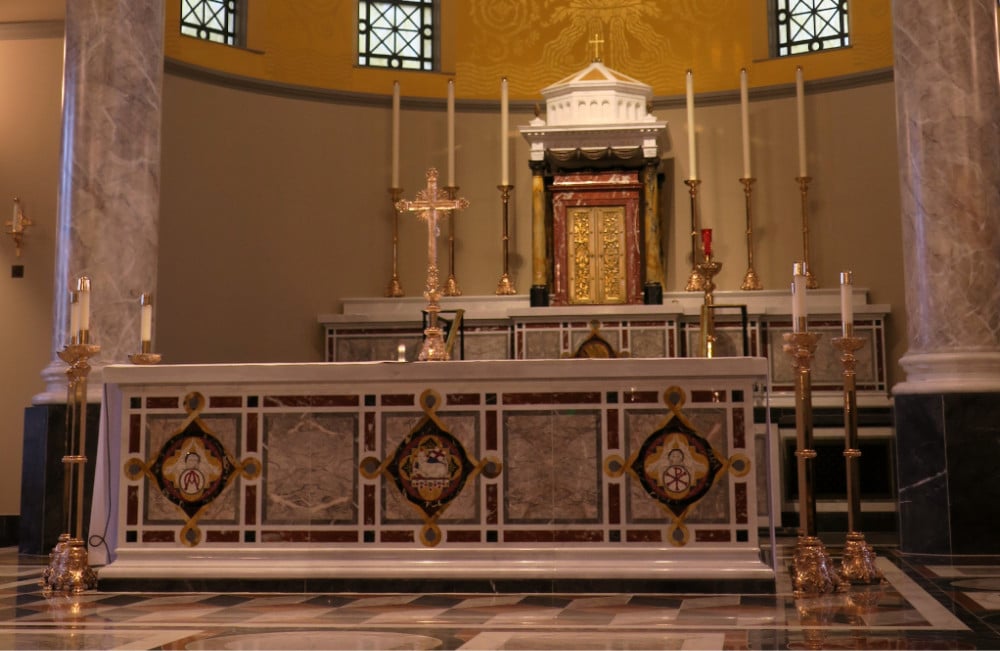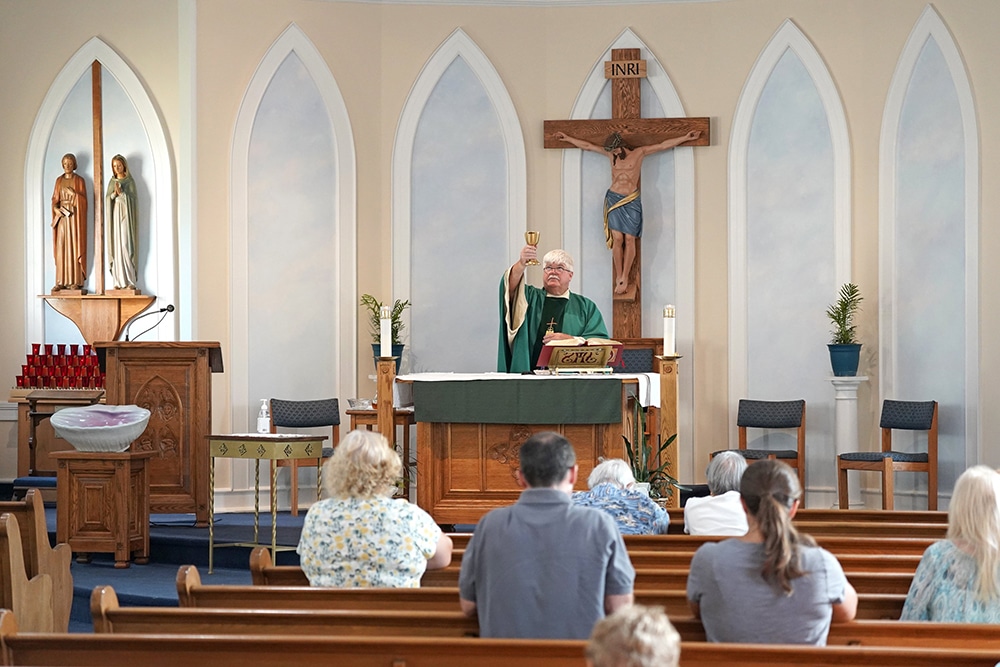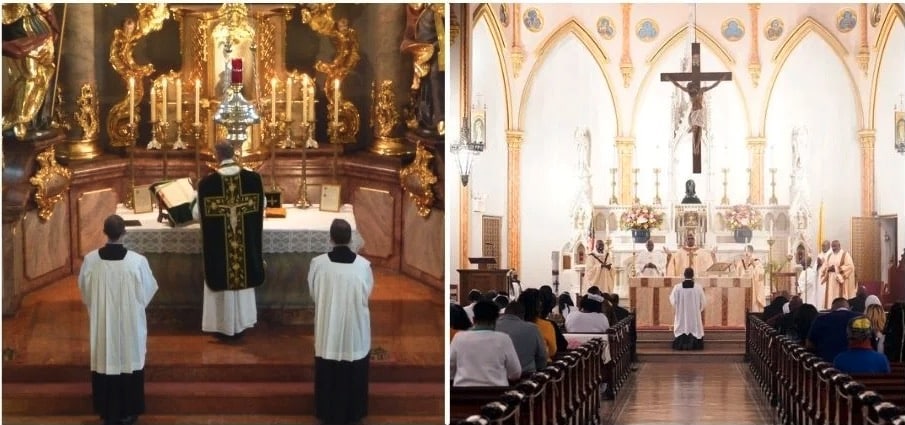
— Andres Wong, via email
Answer: The general norm that is observed is that if the tabernacle is present in the sanctuary, the priest and the other ministers genuflect when they approach the altar and when they depart from it, but not during the celebration of Mass itself. However, if the deacon has the Book of Gospels or servers are carrying things like the cross, candles or thurible, they bow instead. With these exceptions, then, it is proper to genuflect at the beginning of Mass upon entering or approaching the sanctuary if the tabernacle is present and to genuflect upon departing at the end of Mass. Between these two moments, one bows to the altar whenever crossing before it. The altar symbolizes Christ and becomes the focus during holy Mass.
It is also customary for parishioners to genuflect toward the tabernacle before and after Mass when entering or exiting their pew, acknowledging the presence of Christ in the Most Blessed Sacrament.
There are places where, as you note, the tabernacle is not in the exact center behind the altar. However, as long as the tabernacle is in the sanctuary area, the same procedure is followed. If however the tabernacle is in a chapel (as is sometimes the case in large churches or cathedrals), one simply bows upon entering the sanctuary and when crossing the center plane of the altar.
Lectors, who might be seated outside the sanctuary where there is a tabernacle, bow to the altar upon entering and exiting the sanctuary. This is because Mass is underway. No further bows or genuflections to the tabernacle are required. Hopefully the lectors genuflected on their way in with the procession, and extraordinary ministers of the Eucharist (who are often not part of the procession) genuflected when they entered their pew.
To summarize: When the tabernacle is present in the sanctuary, a genuflection is made at the beginning and the end of Mass. Otherwise, bowing to the altar is observed.
In the older form of the Mass, genuflection was observed anytime the tabernacle was crossed. But the revised Mass has simplified this with the intention of focusing on the altar and the Mass taking place upon it. One may have various feelings about this, some preferring the simplification and focus on the altar, others preferring the seemingly greater reverence of always genuflecting. Nevertheless, these are usual norms to be observed in celebrating the revised form of the Mass.
As a further note, the General Instruction of the Roman Missal indicates regarding the position of the tabernacle: “In accordance with the structure of each church and legitimate local customs, the Most Blessed Sacrament should be reserved in a tabernacle in a part of the church that is truly noble, prominent, conspicuous, worthily decorated, and suitable for prayer” (No. 314). In most parish churches, this would seem to be in the center of the sanctuary. Moving the tabernacle off to the side creates some of the confusion you note. It also seems to indicate that the Lord Jesus is not the true center of our attention when he is off to the side somewhere. And while it is true that the altar symbolizes Christ, the Blessed Sacrament reserved in the tabernacle is Christ. It would seem that centering the altar and the tabernacle behind it on the central axis of the church helps avoid confusion. It also helps people keep their focus to the center where Our Lord is both symbolized by the altar and truly present in the tabernacle.
Nevertheless, the norms permit some leeway and a balance has to be struck. Especially, in large churches, like the Basilica of the National Shrine of the Immaculate Conception in Washington, D.C., the tabernacle may need to be located in a chapel or in a way that permits prayer and some degree of intimacy for those who come to pray before the tabernacle outside of Mass. Parishes and pastors need to balance a number of things when locating the best place for the tabernacle.
Msgr. Charles Pope is the pastor of Holy Comforter-St. Cyprian in Washington, D.C., and writes for the Archdiocese of Washington, D.C. at blog.adw.org. Send questions to msgrpope@osv.com.



